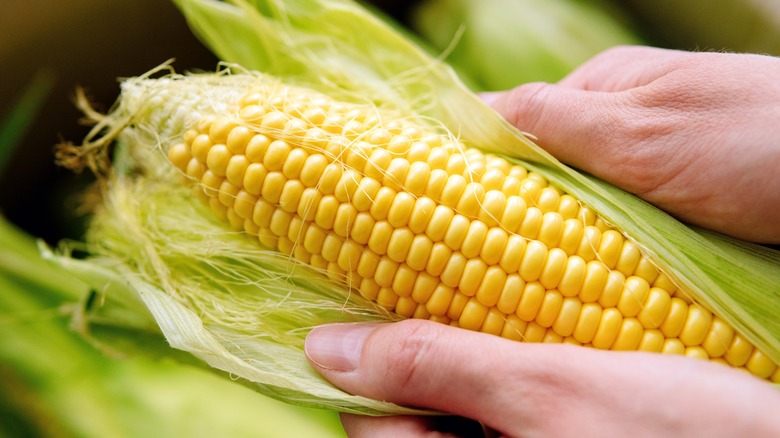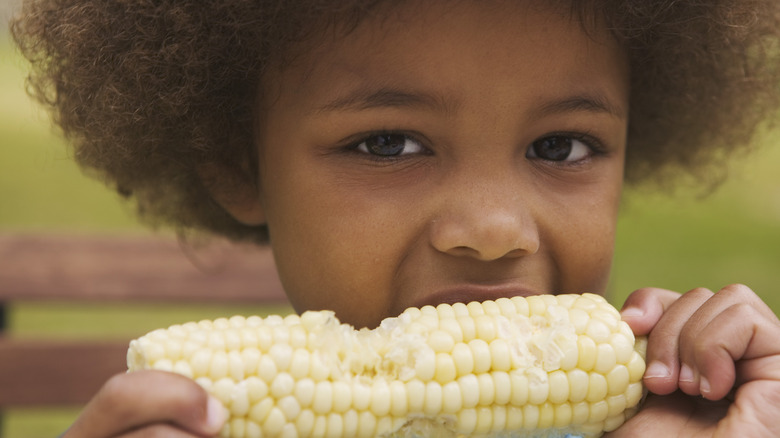How To Buy Perfect Ears Of Corn At The Grocery Store Every Time
When picking out ears of corn from the store, it seems natural to pull the husk back a tad and make sure the kernels look good. Maybe you weren't aware, but this is actually a grocery store faux pas. Exposing the corn makes it dry out faster, which is especially a problem if you end up not choosing that ear and someone else gets stuck with dried-out corn. Luckily, there are plenty of other ways to choose the best ear of corn without taking a peek.
Two important parts to inspect are the husk and the silk that sticks out of the top of the ear. The husk should be bright and green and wrap closely around the corn. If it's dry, loose, and has any brown discoloration, it's probably not the one you want to choose. Also, watch out for small holes in the husk as this could signify insect infestation. The best ears of corn will have silk that is slightly sticky and light brown or golden in color. Avoid corn with black, gooey, or dried-out silk. These are just a couple of the tried and true methods for corn selection, but there are more techniques to try if you want the perfect corn on the cob.
The weight test
One of the more apparent tips for picking corn is to get it from the store when it's in season. But there are other methods that are not quite as obvious. For instance, did you know that farmers measure the quality of their corn by testing its weight? Generally speaking, the higher the weight, the greater the nutrient density and the higher the quality. Grain test weight is particularly significant for farmers since it's factored into price; if the weight of the corn (or other grain) is below the standard, it drops in worth, meaning less money for the farmer. Factors like disease, insects, and drought can all play a part in why corn would have a lower test weight.
How can this help you at the grocery store? If you are picking up multiple ears of corn you may notice a difference in weight. Typically, the better quality ear of corn will weigh more so if one ear stands out as ultra-light, it's best to put that one back.
You can feel for missing kernels instead of looking
It's tempting to peel back the husk and look for missing kernels but there's really no need. Simply feel through the husk and you should be able to spot any open areas or soft spots that indicate the corn has gone bad. You also might be tempted to buy pre-shucked corn since you can see the quality plainly, but this could be a mistake. The husk, along with the corn silk, protects the corn from drying out by sealing in moisture. Therefore, pre-shucked corn likely won't have the juiciness and flavor that corn that's spent more time in the husk would.
If you want the best-tasting corn on the cob, it should be eaten as soon as possible after it's picked, so it's your best option to eat it the same day you bought it from the store. If you do need to refrigerate it, keep it in the husk and store it in the refrigerator. According to Epicurious, corn "will hold in the fridge for five to seven days." Pre-shucked corn, on the other hand, will only stay good for a day or two after buying.


